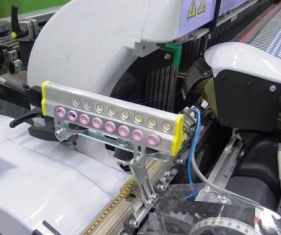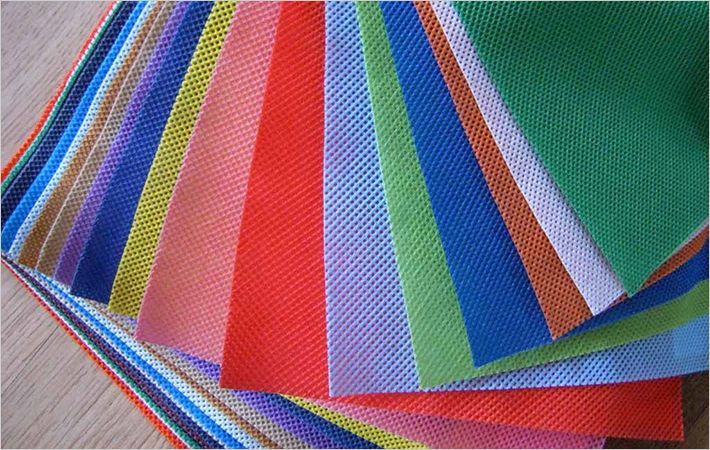Another feature of the new Maestro System allows the weft pattern information to be linked with the signal processing of the numerical values provided by the weft detector. This is completely automatic, requiring no technician intervention. What does this mean?
- If the weft of one eyelet position has to be inserted and for some reason another weft is inserted, Maestro will detect this and stop the loom.Another feature of the new Maestro System allows the weft pattern information to be linked with the signal processing of the numerical values provided by the weft detector. This is completely #
- If two wefts are to be inserted and for some reason only one or three wefts are inserted, Maestro detects this and the loom will be stopped.
- If two wefts are to be inserted and for some reason one of the two wefts is the wrong one, Maestro will detect this and stop the loom.
- The same applies for any other wrong insertion, be it a triple or quadruple insertion; in every case – if the signals transmitted from the weft detector are inconsistent with the weft pattern, Maestro will stop the loom.
Because of this functionality any malfunction of the weft selector or any case where a weft yarn gets entangled with a neighboring weft, Maestro will stop the rapier loom. Clearly, Maestro is a further step in the direction of a rapier weaving machine which guarantees perfect fabric quality.
Some further words concerning the definition of the thresholds, which can be set individually for each eyelet. For a fine weft yarn count, the numerical value will be lower than for a course yarn. If the technician wants to weave with minimum weft yarn deflection (weft yarn as much as possible in a straight line) the numerical values produced by the weft detector will be lower. Maestro visualizes these values and illustrates the weft insertion curve on the loom's display. The technician can easily define the individual threshold for each weft yarn in such a way that every weft break will be detected without creating false or unwanted weft stops. The insertion curves also allow the technician to have a clear view of the signals received at the end of the weft insertion. This allows him to weave with the longest weft control zone. What is meant here is that the yarn will be monitored to the point the weft is released from the gripper. This feature certainly serves to eliminate defects for short picks while also preventing false stops. Further, a more controlled and precise release from the gripper is assured. Consequently, the Maestro System also reduces weft yarn waste.
With Maestro, ITEMA introduces a new look at weft monitoring and the detection of weft breakages on rapier looms. Thus, the complexity for the technician is removed and handled by the software operating with the microprocessor of the weaving machine.
Without adding cost to the weaving machine, the Silver 501 rapier loom assures better quality with Maestro in charge of weft detection.
ITEMA Weaving


